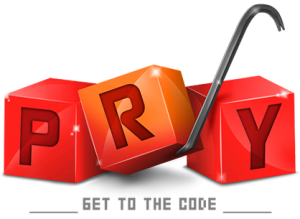To the inexperienced, getting help for Free Software seems a daunting task. However, you can easily get a timely answer to any question or problem you have about Free Software if you follow the right steps. Fortunately, it doesn’t require chicken bones, innane chanting, or even offerings to the hacker gurus.
Figure Out What You Need To Know
The first step to getting help on anything is always to figure out what you need help on. It may sound silly, but failure to observe this detail will probably cause you frustration and grief. If you need to accomplish a particular task with some software, figure out exactly what you want to accomplish. If you have a problem with software, record the error messages and note exactly what went wrong. The more you know, the better chance you have of getting the right help.
The First Stop: Documentation
After you have taken your first step toward getting help, it’s time to take your first stop: documentation. In fact, if you ask for help using one of the other methods without reading the documentation first, you will often be ignored or told to RTFM. If you’re using a Linux machine, try the software’s man page by typing ‘man foo’ where ‘foo’ is the name of the program you need help on. If that doesn’t work, see if the software has Info documentation by typing ‘info foo’. You may also want to see if documentation exists in /usr/doc/foo/. If you’re running Windows, read the help files or check the program’s install directory for a sub-directory named “doc”.
If you can’t find any documentation on your machine, check out the program’s website. The Google search engine’s Linux-specific search page is a good starting point to find a Free Software package’s web site. You may also want to search for the software on Freshmeat or check out the Linux Documentation Project, which stores hundreds of how-tos, guides, books, and documentation collections on Free Software.
Although the documentation for Free Software may seem cryptic to newbies and experts alike, it usually provides the best information. Most Free Software documentation is very thorough, which critics decry as “hard-to-understand.” True, examples are rare in Free Software documentation, but that is for a good reason. Most software of this type contains too many options for the writer to give step-by-step instructions for all but the most common uses of a piece of software.
So how should you read Free Software documentation? Not start-to-finish, for such a task would tire and frustrate the most diligent reader. Instead, treat documentation as you would a reference book. Scan the table of contents for the topic area you need. Then search for key words on pages that look promising. If you can’t find an answer, try another part of the documentation or one of the other sources listed above before trying the next level of help.
The Second Stop: Mailing Lists and Newsgroups
If you can’t find any documentation that answers your question, you should now ask questions through the Net. Most software projects will have a mailing list. Highly-used software projects sometimes have newsgroups. Search the list archives for answers before asking your question; people get annoyed when they are asked the same questions over and over again.
Be polite when you post to a newsgroup or mailing list. Ask your question as simply and concisely as you can and include as many details as possible. Someone out there probably knows the answer and will soon reply.
The Third Stop: Internet Relay Chat
Sometimes, there isn’t time to use a mailing list. For a quicker response, try Internet Relay Chat (IRC). My favorite IRC client is BitchX. It runs on Windows and Linux, but the text mode interface confuses some. If you want a graphical client, try mIRC (Windows) or X-Chat (Linux). If you don’t want to download a client, you can use Linux.com’s browser-based java irc client to access the Openprojects IRC network. You can find it at Linux.com’s website. All of these include documentation that should be enough to get you started using IRC.
When looking for help though IRC, you should first try The Openprojects Network, found on irc.openprojects.net. Linux help can be obtained in channel #linuxhelp. The #linpeople channel is more relaxed, but you may not get an answer as quickly. Many software projects have irc channels on openprojects: PHP (#php); Perl (#perl); C/C++ (#c); emacs (#emacs), and even Open Source Web Design (#oswd). Other good servers to try are irc.xchat.org and irc.gimp.org.
After you join a channel, greet everyone with a “hi” and wait for a little while without doing anything. Interrupting someone else’s conversation is impolite. I personally wait to ask until a current conversation ends. However, people might hold more than three conversations at once, so don’t wait too long to speak. When you do speak, say more than “I need help” or “foo doesn’t work.” Try to state your entire problem in your first statement or at least give enough information to get people interested (if it’s a very long problem). Be patient with the people helping you and they will be patient with you. You should also keep from pasting large blocks of text into the channel. Most channel operator bots will kick you from the channel for this.
The Fourth Stop: Real Human Interaction
If you can’t find your answer in documentation and can’t get people to help you through the standard ways, you have two more options. The first is to get help from your local Linux Users Group (LUG). LUGs consist of interested hobbyists, professionals, and outright wizards who all get together to help each other, talk about Linux, and learn about technology. You can find a LUG near you by checking out Groups of Linux Users Everywhere or The Linux Counter. Many universities and colleges also have LUGs, so you may want to call your local institution. Almost all LUGs have mailing lists, and if you find one in your area, first ask your question on the mailing list. People in LUGs are more likely to spend a lot of time to help you; they form a beginner-friendly community. You can even ask them about other operating systems than Linux, for many people in LUGs use other operating systems as well. If they can’t help you through e-mail, they might even help you in person at the next meeting. The best part? It won’t cost you a penny.
The Fourth-and-a-half Stop: Commercial Support
Sometimes, time is short and money is easily available. In this case, you can always get commercial support. Companies like Redhat, VA Linux, and Linuxcare, as well as many of the major Linux distribution companies, provide high quality fee-based support for Free Software.
Whatever your question, whatever your problem, there is an answer. Follow the steps of determining your problem, checking the documentation, and asking in the right place at the right time, and you’ll find the right answer. So put the chicken bones back in the drawer. As it turns out, getting help for Free Software isn’t that hard after all.
Nathan, also known as The Rubber Paw, programmed his first game of Pong in 1994. A web professional since 1998, Nathan likes tech writing so much, he's studying English at Elizabethtown College.



